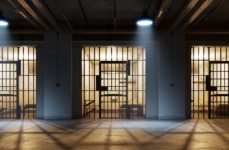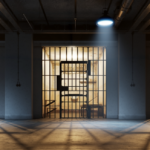Australian Prison Life: Part 2, Having Incarceration as a Last Resort and Focusing on Rehabilitation

Australia in 2017 saw the former NSW inspector of custodial services, John Paget, label the state government’s $3.8 billion retributive and deterrence-based prison expansion program, providing an additional 7000 prison beds, as an “ expensive failure of public policy in Australia”.
This was precisely the sort of system which Nordic countries, Denmark, Finland, Norway, Iceland and Sweden, (which incidentally includes 3 territories, the Faroe islands, Greenland and Aland) were operating under, until reforms saw a reduction in crime and recidivism of former inmates.
This was accomplished by focussing on rehabilitative policies, initially led by Norway but since adopted by several other nations keen to take advantage of the social and economic benefits.
Restorative justice
Restorative justice refers to an approach to justice which is built on three broad principles: encourage and respect, collaboration and reintegration, as opposed to coercion and isolation.
Restorative justice, one of the key tenets from the Nordic model, has 5 key elements which are the 5Rs:
- Relationship,
- Respect,
- Responsibility,
- Repair, and
- Reintegration.
The term Nordic countries is interchangeable with Scandinavian countries, although there are subtle differences.
This Nordic or Scandinavian model as it is frequently referred to, commenced during the 1990s and evolved into a holistic array of forgiveness, healing and other unusual attributes for a prison system.
Switzerland
Switzerland is another country which has embraced penal reforms to a degree, with an open prison along the lines of Nordic countries, but not with the same success in the recidivism sphere. Although, it has one of Europe’s lowest rates of imprisonment of 72 per 100,000 people.
It’s one open prison out of 124 facilities, called Strafansalt Saxerriet, which operates as a professional working prison, with inmate wages based on productivity and who are able to obtain an apprenticeship in various trades. However, it is still only one prison.
Germany
Germany has several open facilities amongst 174 prisons and correctional facilities, where you can go to work outside if approved, where you can wear your own clothes and at a designated time, there is opportunity to spend weekends at home.
It has a system whereby day fines take the place of doing time, at the same time allowing the offender to continue his/her employment. It is an overcrowded system, however.
German corrections officers have 8 months training, mainly in human relations, with approximately 40% of inmates employed in private industry under work-release programs.
1978 saw a National criminal justice research service (NCJRS) study, which determined that an open prison tended to discourage the hardening of criminal behaviour. It also found that the longer an inmate spent in a closed prison, increased the rate of recidivism.
Whilst some German prisons seem to compare to the Nordic model, due to a lack of uniformity amongst states, see other gaols differ in philosophy of the management of inmates.
Prisoners in German gaols indicate that they struggle to build trust with some staff, a key ingredient as to why the Scandinavian model works .
In saying that, the machinations of the prisons are supposed to be on a common theme, which is in accordance with the Nordic model, but in some German states is ignored.
England
Category D are the open prisons of old blighty, as this country is called. England has 14 open prisons and permits inmates to spend every day away from the prison, on licence for work, education, or other approved resettlement matters.
Wales
The Welsh operate 1 men’s open prison (category D), called HMP Precoed which is located in Coed-y-paen, several miles from Usk in Monmouthshire, with England housing the women’s open gaol.
Scotland:
HMP Castle Huntly is Scotland’s sole open prison and is located near Dundee.
Northern Ireland:
The Irish have no open prisons in the north of the country.
So, the total number of prisons across the 3 legal jurisdictions of the United Kingdom are:
- England & Wales 122 prisons
- Scotland 15 prisons
- Northern Ireland 4 prisons
A 2007 study by the British journal of criminology (BJS) challenged the Scandinavian corrections penal policies, obviously leading to a safer society, however in its conclusion gave it the thumbs up, so to speak.
This paper actually explained the reasons for slight increases in Nordic prison populations since the initial reforms, which involved changes to new penal values attached to sentences and not as a result of an increase in crime, albeit it focussing on Finland, Norway and Sweden in particular.
However, what the analysis did show was that the Scandinavian model was not based on a bleeding heart for convicts, but as a considered analysis of what this acknowledged exceptional model of prison reform through the 1990s and beyond did for the safety of citizens in those countries.
Which, of course, also included that of the inmate’s family, also innocent members of society.
Crime figures continued to decline, resulting in lower rates of recidivism and the BJS challenge affirmed the merit of Scandinavian reforms, with more parts of the world continuing to examine the benefits associated with the Nordic model.
Indeed, two years prior to the aforementioned paper, Finland inserted protection of prisoners’ rights in its constitution and the Prisoners Act 2005.
2022
Fast forward and the journey continues with a current report by the same British journal of criminology, reporting in 2022:
Again, playing devil’s advocate, this report dissected all the pros and cons put forward by opponents of the Nordic system, comparing it with other countries penal policies, yet despite some of those opponents coming from within the Nordic countries; the overall incontrovertible fact was that it works significantly better than every other country’s penal system.
No better example of this is the statistic from an American state which adopted the Scandinavian model, North Dakota, and now has the lowest rate of incarceration, including reducing the rate of recidivism by 50%.
Nordic governments believe that prisoners should be as close to their families as possible, with up to 3 visits per week, including conjugal visits approved in some facilities.
The Scandinavian rehabilitative format assists the economy as more people work, due to the fact they are taught relevant skills whilst in prison, focussing on both emotional and moral rehabilitation, evolving into a philosophy of comfort, healing, forgiveness and inclusivity.
This leads to an enhanced sense of self-worth.
Those Nordic countries decided to spend the money throughout the 1990s and beyond to change a system, indeed, a culture which was not fit for purpose.
This was somewhat inspired by Norwegian criminologist, professor Nils Christie, a member of the Norwegian academy of science and letters who, in 1993 wrote Crime control as industry amongst many books and whom it is reported was a major influence on Scandinavian penal policy.
The naysayers attempted to decry such an innovative achievement bettering mankind by saying smaller countries are more able to implement such a cultural change, but as we shall see, even the mighty USA is beginning to adopt, albeit rather slowly, what is regarded as the Nordic or Scandinavian model.
Prison is the punishment, not a place to endure punishment
The courts have said time and again that people are sent to prison as punishment, not to be subjected to punishment over and above the deprivation of liberty.
The guiding principle is that deprivation of liberty and nothing over that is the punishment of the prisoner, with Nordic prison life mirroring life on the outside to a great degree.
This is one of the principal differences between Australian prisons and Scandinavian gaols.
By using doctors, dentists, teachers, ministers of religion and other services from the community, it fosters understanding and ultimately inclusivity support.
Whilst Australian prisons have similar programs like Scandinavia, but not quite the same though, where each inmate in Nordic facilities once released must move to a half-way house and be assisted by a supportive social network prior to finally being freed.
Australia falls somewhat short of the holistic philosophies in conjunction with many aspects of the model, despite trying hard, as you the reader will see.
One of the key aspects of this highly successful system is that no prison is ever overcrowded, as recidivism is the lowest of most jurisdictions, due to the fact of extensive programs, ending in many instances with employment being secured prior to release.
Indeed, some of those inmates in what are called open prison facilities are permitted to keep their outside employment and in the Nordic countries, there are now many open facilities.
Australian prisons could have been so different
A particular focus of the Nordic program, which has seen success over the past couple of decades, is that of recidivism in younger inmates in adult prisons significantly reduced; leading to an Australian maximum-security prison in Victoria in 2017 endeavouring to adopt this very system.
This took the form of a senior corrections officer, indeed a general manager, undertaking a degree in criminology, two university professors and one long term inmate who researched and prepared a sound model for the provision of funding which was granted.
The long-term inmate, after 15 months working on the project, was due for release and had been tasked with visiting the Nordic facilities and preparing a report for the team of the practical experience of seeing it in action first hand.
Unfortunately, once the team were ready to plan the layout of a unit which was designated for the program for the younger inmates in Barwon prison, with the plan to eventually run it out to all of Australia, the funding was pulled. Why?
Well, there was a riot in another Victorian gaol, which saw the destruction of part of the prison, with the funding for a cultural change in Australian corrections philosophy sacrificed for repairs.
Some pertinent facts are:
- The committee for economic development of Australia (CEDA) are calling for reform to reduce prison populations.
- The Nordic system has widespread community support to thank as part of its success, with trust on all sides a key element as to why it works.
- North Dakota, Pennsylvania and Oregon have already implemented the Scandinavian model, with late 2022 seeing Washington governor, Jay Inslee visit Oslo with department of corrections officials and intent on implementing it in that state.
- Michigan seems to be another US state about to embrace the Nordic model.
- Many new prisons in the Nordic countries are being built without bars, etc.
Mental health of prison staff
It should be noted that it is not only inmates and their families, including the inclusivity of the community at large who benefit from this model, but the wellness of correctional staff improves.
US studies, amongst them Frontiers (A peer reviewed scientific journal), show that the national average life expectancy is 75 years, however, the average life expectancy age of a corrections officer is 59.
This is as a result of the chronic psychological issues suffered, including post-traumatic stress disorder (PTSD).
This is par for the course across the corrections spectrum all over the world….except for Nordic countries and some global jurisdictions, with this model having proved successful over several decades now, being adopted by other nations, at least in part as shown by several US states
It should be added that the Nordic juvenile system has similar philosophies.
Sweden with a slight variation
Murderers in Sweden can be given life, but mainly it is 18 years, which incidentally since a new law in 2022, an 18-year-old murderer can now get life, however, is able to go before a court if showing exceptional cogent signs of rehabilitation.
Sweden’s rehabilitation system, like other Nordic correctional services has also seen reduced recidivism, again thanks to the Nordic model of normalisation, restorative justice and open prisons.
Focus, again, is on ensuring employment is available to inmates, which adds a sense of control and stability, resulting in an enhanced sense of self-esteem.
Typically, 30% of inmates take 30 months to find employment, if left to their own devices.
Not so, however, in one of Stockholm’s open prisons, where emeritus professor of criminology, John Pratt, of Victoria university in Wellington noted that there was a carpark for inmates, who drove to and from work.
In total, Sweden has 48 prisons and 30 remand units, with 16 of the prisons regarded as open gaols.
Finland has open prisons
Open prisons, even for murderers and similar to other Nordic countries, has a prison farm in Helsinki, on Suomenlinna island, also with low recidivism statistics.
Finland, with 11 open gaols, if they indeed can be called that and 15 closed prisons actually commenced their open type plan in the 1960s when Scandinavia embarked on a reform policy of decarceration, but not quite as comprehensive as the current model.
Iceland
Iceland’s prisons, 2 of its 5 gaols are open and considered the most open, with Kviabryggja having next to nothing, in terms of perimeter security. It is another success story of the Nordic model, with all the normalisation, restorative justice, rehabilitation and reintegration working in tandem, repairing to some degree the harm caused.
Importantly, the low risk of recidivism makes for less crime, less prisoners, less family breakdowns and more safety for society.
Denmark
Danish open prisons number 10 and there are private visiting rooms for family get togethers, also with the philosophy of restriction of liberty and nothing else.
Open prisons encourage responsibility, allowing inmates to have some control over their daily routine.
The three territories
There are no prisons in the Faroe Islands.
Greenland has 6 prisons with a capacity for 154 inmates which are regarded as open facilities.
There are no prisons on the Aland islands.
Holland and Norway hybrid facility:
A Norwegian prison in Holland to house Norwegian prisoners which became an unintended experiment, was called Norgerhaven and existed for a period of 3 years from 2015 to 2018. Both countries had similar philosophies, or so it was believed.
In conclusion, after researching about 50 pages concerning this hybrid gaol, it came down to the fact that whilst the Dutch and Scandinavians had like minded philosophies, the years of having reformed its system to the degree it had; the Scandinavian officers in Norgerhaven were more attuned to the normalisation and restorative justice aspect than that of their Dutch counterparts.
Holland’s reduced incarceration policy
In relation to Holland’s dispensing of justice, no matter what perspective you look at it from, it was doing something right, as due to the lessening of people being sent to prison, it had closed the cell doors of more than 20 prisons throughout the Netherlands since 2013 until 2019.
Due to lax laws on soft drugs, such as cannabis and its police force targeting transnational suppliers of hard drugs, such as cocaine and heroin, as opposed to the addicts; both these aspects appear to have significantly reduced potential offenders from appearing before the courts.
I’m not quite sure that the suggestion of low levels of poverty is contributing to this, nor am I convinced that under reporting of crimes such as theft of bicycles and burglaries also contribute to this rather enviable situation, but I stand to be corrected.
I’m more inclined to accept that one of the reasons is Holland’s decision to supply specialist psychiatric/psychological care to those with mental health issues who commit crimes, which may ordinarily have attracted a period of incarceration.
This initiative has been applauded by Dutch forensic psychologist, Hommo Folkerts, with the Dutch justice ministry’s WODC (research and documentation centre) confirming these statistics.
Incredibly, since 2004, the Dutch prison rate has halved.
An amazing and in the western world, unparalleled development, quotes professor Miranda Boone, criminologist at Leiden university.
Some cynical observers may suggest that Holland’s rather lucrative policy of penalty fines, rather than incarceration may be a contributary factor.
To its eternal credit, Holland has also set up a specialist psychiatric/psychological rehabilitation TBS institution (meaning at the disposal of the government).
As testimony from a patient, Bas de Vries who was a recipient of TBS therapy, comes the endorsement now that he is well, that it works.
Psychiatrist, Melina Rakic, director of Amsterdam’s Inforsa medical health clinic, says that the treatment also works in reducing recidivism.
Gijs Weijters senior researcher in recidivism and psychologist, Miriam van Driel, Mr de Vries TBS clinician, support TBS wholeheartedly.
Professor Baz Dreisinger, executive director of the Incarcerations Nations Network (INN), a global think tank whose end goal is to work toward a world where there are no prisons, suggests that Nordic countries have strong social services and as such, crime may be seen less likely to occur.
However, the secret is that the authorities work hard to keep people from actually being incarcerated. Across the Scandinavian countries, there are about 17,000 people in gaols in total, with Australia having roughly 42,000, with both countries population roughly the same.
In addition, Scandinavia rarely send children to prison. In 2022, the deputy director of the Norwegian directorate of correctional services, Jan-Erik Sandlie said there was only 2 or 3 children under the age of 18 in custody, where the age of criminal responsibility is 15 years.
In contrast in 2021 there were 819 children between the ages of 10 and 17 years in Australian youth detention, with the age of criminal responsibility being 10 years.
So, the question must be why the disparity? Why are Australian prisons so full? Is it the fault of our governments, which appear to hold to the mantra that there are no votes in prisons, unless the political parties advocate for tougher law and order campaigns?
Is the community at large, unlike Nordic society which supports the holistic approach in all its forms of prisoner rehabilitation, encouraged by political rhetoric not to embrace such policies; but rather harbour an unsubstantiated level of fear and apprehension, despite the incontrovertible success of Nordic normalisation and restorative justice?
Reform and rehabilitation with the public’s approval
Scandinavian prisons have grown more open in the past decade or so, with crime having reduced as has the number of inmates and strange as it may seem, particularly violent crime. Or maybe it’s not so strange, with the type of staff interaction and behaviour modification through self-worth that a Scandinavian prison term delivers.
There is also a strong sense of trust between the authorities and the public, which translates to an inclusive society, compatible conditions and situations in prisons; encouraging openness including responsibility, which are critical components in rehabilitation to maintain as connected as possible to the outside.
If only Australia could implement the Nordic model, perhaps our public would gain more trust in the authorities, once the results bore fruit.
For this is a program which intrinsically needs public support.
These are important questions for Australians to ponder, from the men and women in the street to our politicians, as it is abundantly clear that it would make for a safer Australia, with less people sentenced to prisons and the recidivism rate of those released reduced.
Australian politicians, stay out of prison reform!
Scandinavian criminal justice policy rarely enters political debate, leaving it to the criminology experts who are generally universally published.
The Nordic media also does not sensationalise crime in the manner Australia does and at times, hardly publishes it at all.
Professor Dreisinger, regarded as an expert in global criminal justice systems said that there is a compatible relationship between inmate and officers who are educated in ethics and associated social skills who act as guidance counsellors to the inmate.
In many Scandinavian prisons, inmates and staff address each other by their Christian names, eat together and participate in sport and social activities with one another
What we see in Australia and I am sure many other countries, is an aversion to become too close to an inmate or officer for the physical danger it poses for an inmate and the verbal assault for the officer who it has been heard not infrequently, tagged with the term crim lover and at times subsequently castigated by his or her colleagues.
So, both Australian staff and inmates will have some soul searching to do, before there is such camaraderie, which through time may see a trust develop. For I am sure it was once that way for Nordic staff and inmates.
It is obviously capable of happening, as so many countries have worked it out much to their credit.
Example of political interference
Democratic assembly member, Carlos Villapudua of Stockton, California, having read about the Scandinavian model and sponsored a bill, based on the Nordic model for his state, due to its recidivism problem, with two thirds of prisoners returning within 3 years. The bill apparently passed through the house of representatives but was vetoed by the Californian governor late last year on the grounds it included fiscal obligations that are better handled in the annual budget process.
Further potential benefits
Those Scandinavian, Dutch and German inmates in outside employment and being paid a normal wage, may one day see Australian prisoners earning the same money, with the Aussie then able to continually contribute to their families during the final part of incarceration; thereby reducing another aspect of collateral damage when a breadwinner goes to prison in most countries.
It may also alleviate the potential for poverty and homelessness in some families, a major problem frequently causing a breakdown in the family unit.
Educational perspective
There is a focus on encouraging the educational aspect of diplomas and other similar formal qualifications, as a result of studies indicating less recidivism in those who acquire such enhanced formal achievements.
This was highlighted by associate professor, Kristina Brunila, co-author with Katarina Mertanen in an education inquiry paper which also supports the merits of professional qualifications.
The higher the education achieved, the less recidivism, with the process of normalisation increasing the likelihood of reintegration successfully.
The first two lead to receiving and maintaining employment, although I would have thought that any type of employment can lead to non-recidivism.
Normalisation is described thus, as one of 5 key principles for prison policies, as outlined in the Norwegian ministry of justice and police white paper and described in three contexts:
- Apart from the restriction of freedom, prisoners keep the same rights as every other citizen
- Normality requires that no more security and safety measures be instituted than necessary
- All aspects of life in prison should be shaped as much as possible to the equivalent of life in a free society
Funding of correctional facilities
Some institutions receive public and private funding for education, which lessens the imposition of normal reduction at times of government cuts, thanks to the assistance of organisations such as the Nordic council of ministers which is an intergovernmental cooperation group of members of parliament with quite impressive influence.
Story of another in prison who made life bearable for others
I said in episode 1 of Australian prison life that episode2 would be a story about another inmate, however, I have changed my mind.
This story is about a remarkable man who not only made life bearable for inmates, but for his staff and the families of inmates.
This man was acting director of corrections Victoria, who was responsible for all of the state’s correctional facilities.
When he arrived back at Barwon maximum security prison in Melbourne, it was to a fragile establishment, due to a murder within the most secure unit of the gaol.
The murdered man was the father of a young child whom the inmate had been banned from contact visits with, for a minor infraction. A father of a daughter and son, the acting director countermanded the disciplinary procedure in a subtle way by allowing the child to sit in the same side of the box visit with her father. A box visit is where you sit a few inches away from your wife or family, separated by a window and forced to communicate via a telephone.
In prison, if one fell foul of a particular staff member and I stress it didn’t happen often at Barwon, but you could be what’s called written up for some imaginary or unintentional breach of jail rules.
On this occasion, one of the inmates was out jogging and was called in by a staff member as it was near muster (where you line up to ensure you are still in the prison)
The inmate knew he could get another lap in and not miss muster, so he kept going and true to his word he made muster but faced the disciplinary charge.
Such a charge may have resulted in the inmate missing seeing his family at the weekend, so it was put to the gentleman whose name is David Prideaux what actually occurred and left at that.
The following day the charge was withdrawn, due to the fact that David had gone and viewed the VAR and determined that the charge was unsustainable.
Another time was the most important of all. A gentleman known as the horse whisperer (a name bestowed upon him for his excellence with animals) had a parent who was seriously ill in hospital.
At that stage in Barwon and I suppose all other facilities, one had a choice to go and see one’s loved one in hospital, or go to the funeral, not both. What a dilemma.
The son chose visiting his parent in hospital, but a short time later the parent passed. David Prideaux changed the local operating procedures to ensure the inmate could attend the funeral, as indeed could all inmates in every corrections facilities in the state in the future.
The final anecdote involves your author. It was a Friday, late afternoon and the GM needed me to do something. It turned out to be one of the sad times in my life. He had an inmate in the management unit who had threatened to sew his lips up, as he had done once before when he went on a hunger strike.
The SEG (special emergency group had searched his cell and body to find the needle and thread, to no avail. David was aware that I had been granted permission to visit the management unit to assist inmates, including the hunger protester with their educational assignments and wondered if I could speak with my student.
I advised David to tell the seamstress that he had made a promise to me, which I extracted from all the lads I was assisting; that they couldn’t cause any trouble, as it would result in my permission to assist them being withdrawn.
My inmate friend handed over the hunger strike equipment. I did say this day turned out to be a sad day for me, albeit in hindsight.
David had looked tired and he was a very fit man and I said to him that he had to slow down, which be used to say to me. He was at that time consumed with the acting director position and the issues at Barwon.
However, he said that he was taking the weekend off and going hunting in the high country with his brother-in-law. That was the last time I saw my friend.
David disappeared without a trace in the high country
David Prideaux, an officer and a gentleman, who had arranged for the building of three multi-faith chapels at separate prisons, would have smiled at the irony. Over 100 inmates attended a memorial service for him in the chapel he had built at Barwon, a fitting tribute to a gentleman who truly cared about the men doing time.
Change is desperately needed, for everyone’s sake
The Nordic model of penal reform, in conjunction with Holland’s policy of decarceration by virtue of TBS therapy, will be the saving of Australian lives in many respects, saved by both these miraculous initiatives.
These initiatives will lead to less recidivism, less incarceration and less staff unwellness.
Notwithstanding, of course, the Dutch lucrative penalty fines initiative, in lieu of prison.
The facts are clear and incontrovertible.






